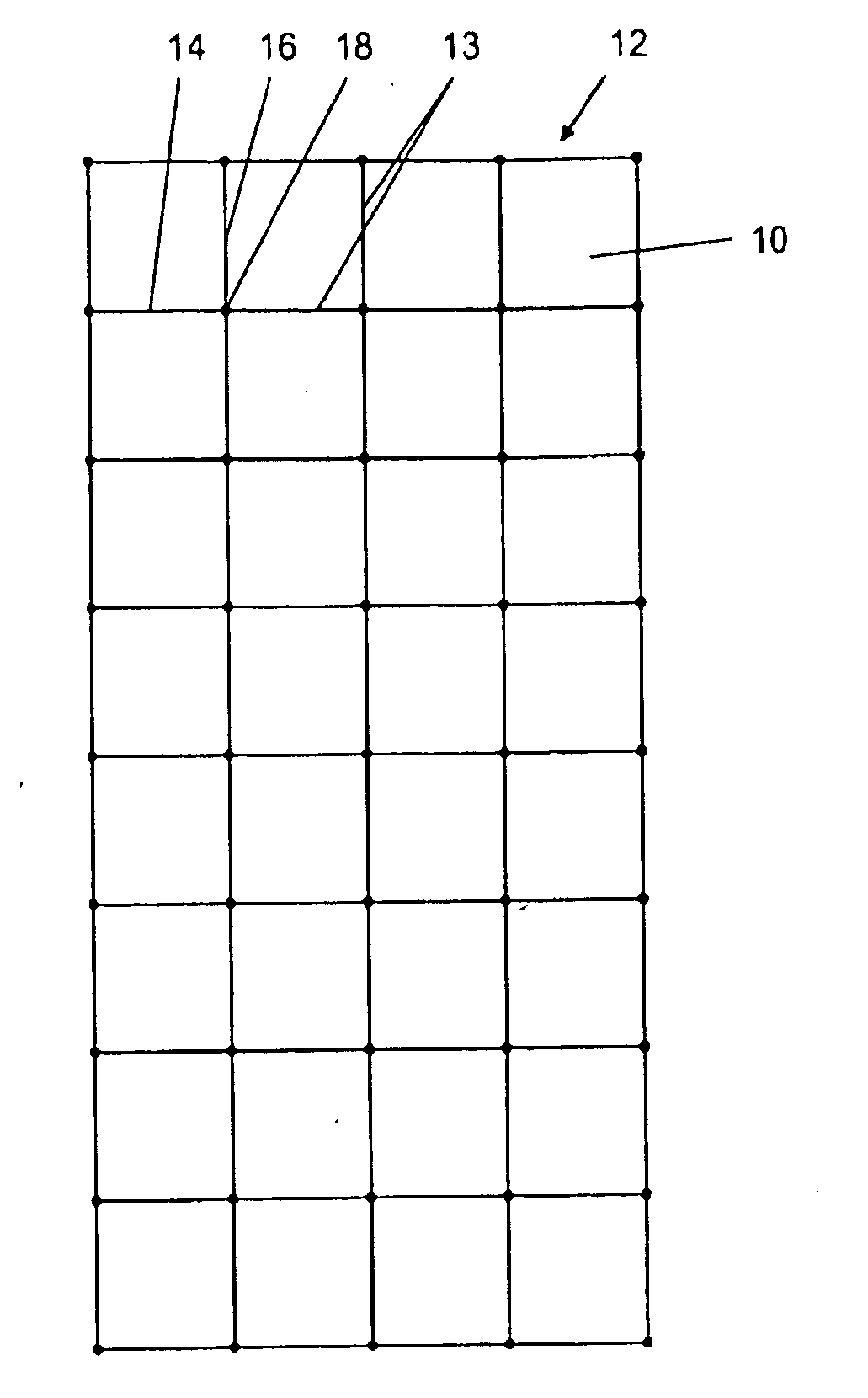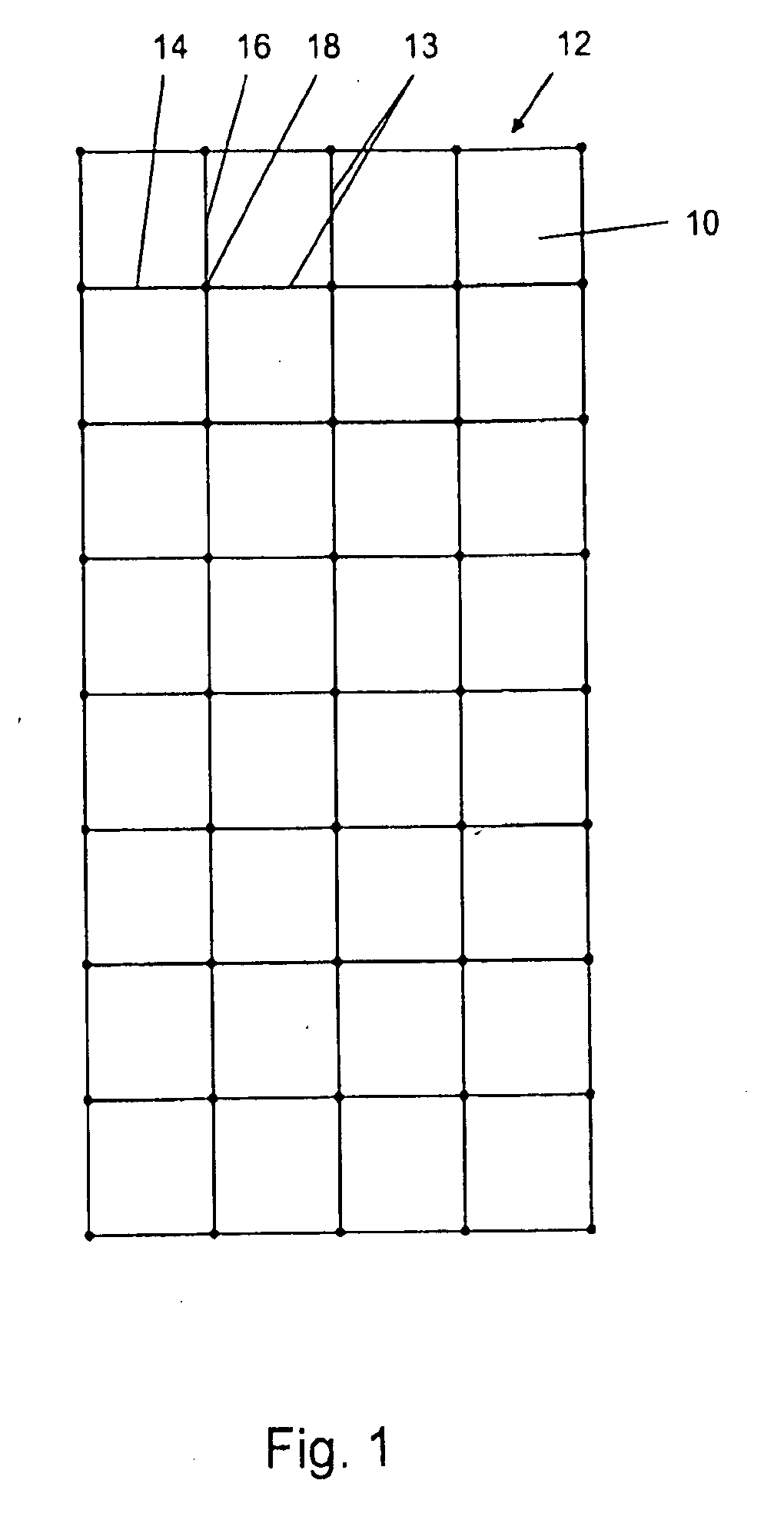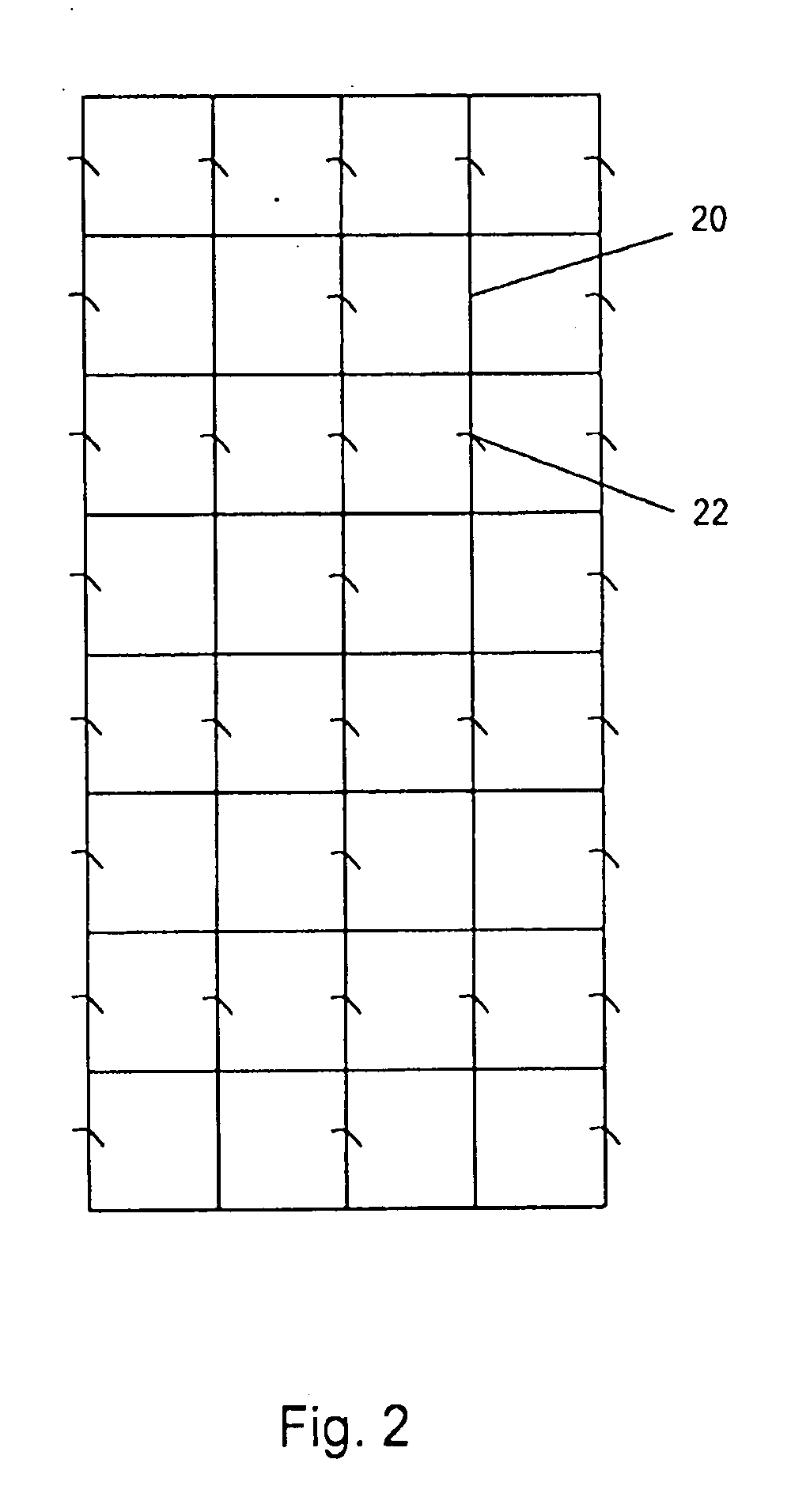Reinforced biological mesh for surgical reinforcement
a biological mesh and surgical technology, applied in the direction of prosthesis, peptide/protein ingredients, paper/cardboard containers, etc., can solve the problems of fragmentation, no single prosthetic material has gained universal acceptance, and the frequency of repairing and replacing damaged tissues remains a frequent, costly and serious problem in health car
- Summary
- Abstract
- Description
- Claims
- Application Information
AI Technical Summary
Benefits of technology
Problems solved by technology
Method used
Image
Examples
example 1
[0084]A composite material according to one embodiment of the invention was prepared. The composite material is demonstrated in FIG. 1, which shows a treated section 10 of acellular allograft or xenograft tissue which is generally rectangular in shape with a substantially planar surface having a dimension of about 3 cm to about 5 cm in width and about 6 cm to about 10 cm in length with a thickness of about 0.2 mm to about 0.8 mm. A reinforcing mesh 12 constructed of a multifilament polyester 13 with longitudinal strands 14 and transverse strands 16 are fused together at fuse points 18 to form a mesh of rectangular sections in an X and Y direction spaced about 1 cm on each side. The reinforcing mesh can have various designs such as squares, rectangles, ovals, circles, triangles, spirals and undulating but preferably has spaced dimensions ranging from about 0.1 cm to about 2.0 cm, preferably about 1.0 cm. The mesh is designed to last for at least about 1 month to about 6 months.
[0085]...
example 2
[0086]A composite material according to one embodiment of the invention was prepared. As is shown in FIG. 3, the composite material is an acellular sheet 30 reinforced by allograft or xenograft tendon fibers 32 which are stapled 34 onto the sheet and stapled 36 where the fibers intersect. The tendon fibers can be treated with anti-infectives to prevent infection as noted above.
example 3
[0087]A composite material according to one embodiment of the invention was prepared. As shown in FIG. 4, two acellular dermal sheets 40 and 42 are sandwiched around a fiber mesh 43 constructed of the same materials as described in Examples 1-3
PUM
| Property | Measurement | Unit |
|---|---|---|
| size | aaaaa | aaaaa |
| size | aaaaa | aaaaa |
| size | aaaaa | aaaaa |
Abstract
Description
Claims
Application Information
 Login to View More
Login to View More - R&D
- Intellectual Property
- Life Sciences
- Materials
- Tech Scout
- Unparalleled Data Quality
- Higher Quality Content
- 60% Fewer Hallucinations
Browse by: Latest US Patents, China's latest patents, Technical Efficacy Thesaurus, Application Domain, Technology Topic, Popular Technical Reports.
© 2025 PatSnap. All rights reserved.Legal|Privacy policy|Modern Slavery Act Transparency Statement|Sitemap|About US| Contact US: help@patsnap.com



